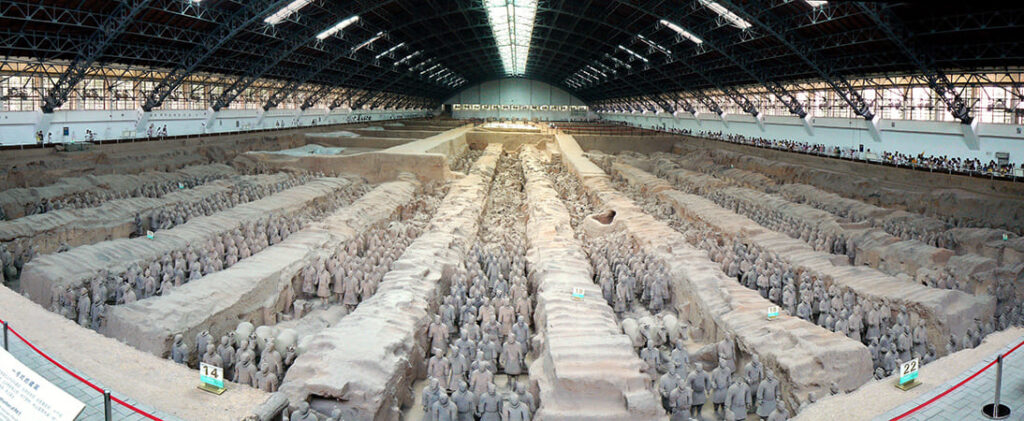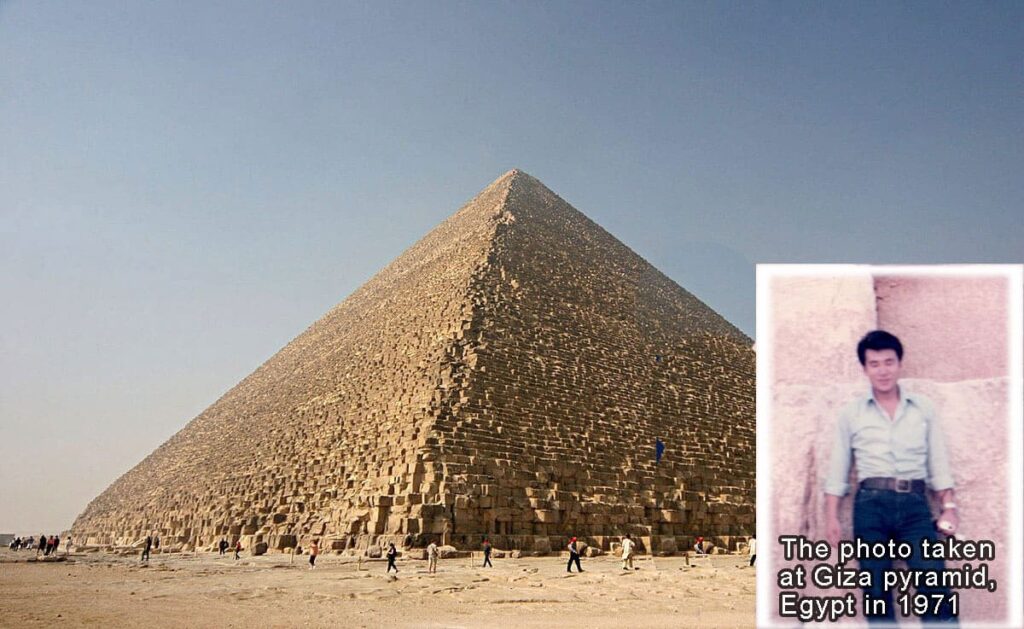Hi, how are you? Today I’m happy to announce you that the well-known largest ” Kofun (burial mounds) ” recommended by UNESCO panel to become world heritage site.
UNESCO indicated its readiness May 13 to grant World Heritage status to a cluster of the Kofun (mounded tombs) which are known as “Daisen Kofun” in Sakai-shi, Osaka Prefecture dating to the late fourth and fifth centuries.
Of the 49 mounds under consideration, 29 are thought to be those of emperors, empresses or other imperial family members.

A bird’s-eye view of “Daisen Kofun”
A UNESCO advisory panel has recommended adding two ancient tumulus clusters in western Japan, including the country’s largest keyhole-shaped mound, to the World Cultural Heritage list, a government official said on May 14, 2019 Tuesday.
Among the sites is the mausoleum of Emperor Nintoku in Osaka Prefecture, officially called “Daisen Kofun”. It is one of the three largest mounded tombs in the world.
Contents
What’s the three largest mausoleums in the world?
They are the Mausoleum of the First Qin Emperor in China, the Great Pyramid of Giza in Egypt and the Daisen Kofun in Osaka, Japan.
1) Mausoleum of the First Qin Emperor
The Mausoleum of the First Qin Emperor (Qin Shi Huang) is located in Lintong District, Xi’an, Shaanxi province of China. This mausoleum was constructed over 38 years, from 246 to 208 BC, and is situated underneath a 76-meter-tall tomb mound shaped like a truncated pyramid.
The layout of the mausoleum is modeled on the Qin capital Xianyang, divided into inner and outer cities. The circumference of the inner city is 2.5 km (1.55 miles) and the outer is 6.3 km (3.9 miles).
The tomb is located in the southwest of the inner city and faces east. The main tomb chamber housing the coffin and burial artifacts is the core of the architectural complex of the mausoleum.
The tomb itself has not yet been excavated. Archaeological explorations currently concentrate on various sites of the extensive necropolis surrounding the tomb, including the Terracotta Army to the east of the tomb mound. The Terracotta Army served as a garrison to the mausoleum and has yet to be completely excavated.
Terracotta Warriors2) Great Pyramid of Giza
The Great Pyramid of Giza is the oldest and largest of the three pyramids in the Giza pyramid complex bordering present-day El Giza, Egypt. It is the oldest of the Seven Wonders of the Ancient World, and the only one to remain largely intact.
Based on a mark in an interior chamber naming the work gang and a reference to the fourth dynasty Egyptian Pharaoh Khufu, some Egyptologists believe that the pyramid was thus built as a tomb over a 10- to 20-year period concluding around 2560 BC.
Initially at 146.5 metres (481 feet), the Great Pyramid was the tallest man-made structure in the world for more than 3,800 years until Lincoln Cathedral was finished in 1311 AD. Originally, the Great Pyramid was covered by limestone casing stones that formed a smooth outer surface; what is seen today is the underlying core structure.
Some of the casing stones that once covered the structure can still be seen around the base. There have been varying scientific and alternative theories about the Great Pyramid’s construction techniques.
Most accepted construction hypotheses are based on the idea that it was built by moving huge stones from a quarry and dragging and lifting them into place.
There are three known chambers inside the Great Pyramid. The lowest chamber is cut into the bedrock upon which the pyramid was built and was unfinished. The so-called Queen’s Chamber and King’s Chamber are higher up within the pyramid structure.
The main part of the Giza complex is a set of buildings that included two mortuary temples in honour of Khufu (one close to the pyramid and one near the Nile), three smaller pyramids for Khufu’s wives, an even smaller “satellite” pyramid, a raised causeway connecting the two temples, and small mastaba tombs surrounding the pyramid for nobles.
Japan’s largest Kofun (burial mounds) eyed to become world heritage site
The world heritage listing for the sites, collectively called the Mozu-Furuichi tumulus clusters, is expected to be officially approved at a meeting in Azerbaijan from June 30 to July 10 of the World Heritage Committee of the U.N. Educational, Scientific and Cultural Organization.
Local authorities first proposed the tomb clusters as a World Cultural Heritage site candidate to the Cultural Affairs Agency in September 2007. The government submitted a letter of recommendation to UNESCO to seek their listing in January last year.
The tumulus clusters would be the 19th Japanese cultural property on the World Heritage list, following the inscription last year of a set of Christian sites in Kumamoto and Nagasaki prefectures.
If registered, the total number of world heritage sites in Japan will increase to 23, including 19 cultural and four natural sites.
Mariko Kobayashi, head of the Cultural Resources Utilization Division at the Cultural Affairs Agency, told a news conference early Tuesday that the historical value of the tumulus clusters and their preservation status have been highly recognized. “It’s good that all of those have been acknowledged,” she said.
Japan’s government has sought the listing of 49 tombs built between the fourth and the fifth centuries, which vary in size and shape.
Emperor Nintoku’s mausoleum, which is part of the Mozu cluster in the city of Sakai, has a keyhole-shaped mound at its center, which is 486 meters in length. Its total length, including the surrounding moat and ramparts, is 840 meters.
Some academics have expressed doubt the tomb may have actually been the grave of Emperor Nintoku, but the site continues to be managed by the Imperial Household Agency as one of a number of imperial mausoleums in the country.
Approximately 10 kilometers to the east of the Mozu cluster is the Furuichi cluster, which includes the Emperor Ojin mausoleum — the second largest in Japan, at a length of 425 meters.
The Mozu area that now includes Sakai and the Furuichi area covering Habikino and Fujiidera were centers of politics and culture in ancient times.
The burial mounds are physical representations of the authority and social status of the individuals buried there, and thus serve as important evidence about early Japanese history.
The final decision for inclusion into UNESCO’s World Heritage list will be made at a World Heritage Committee meeting scheduled to start June 30 in Baku, Azerbaijan.













